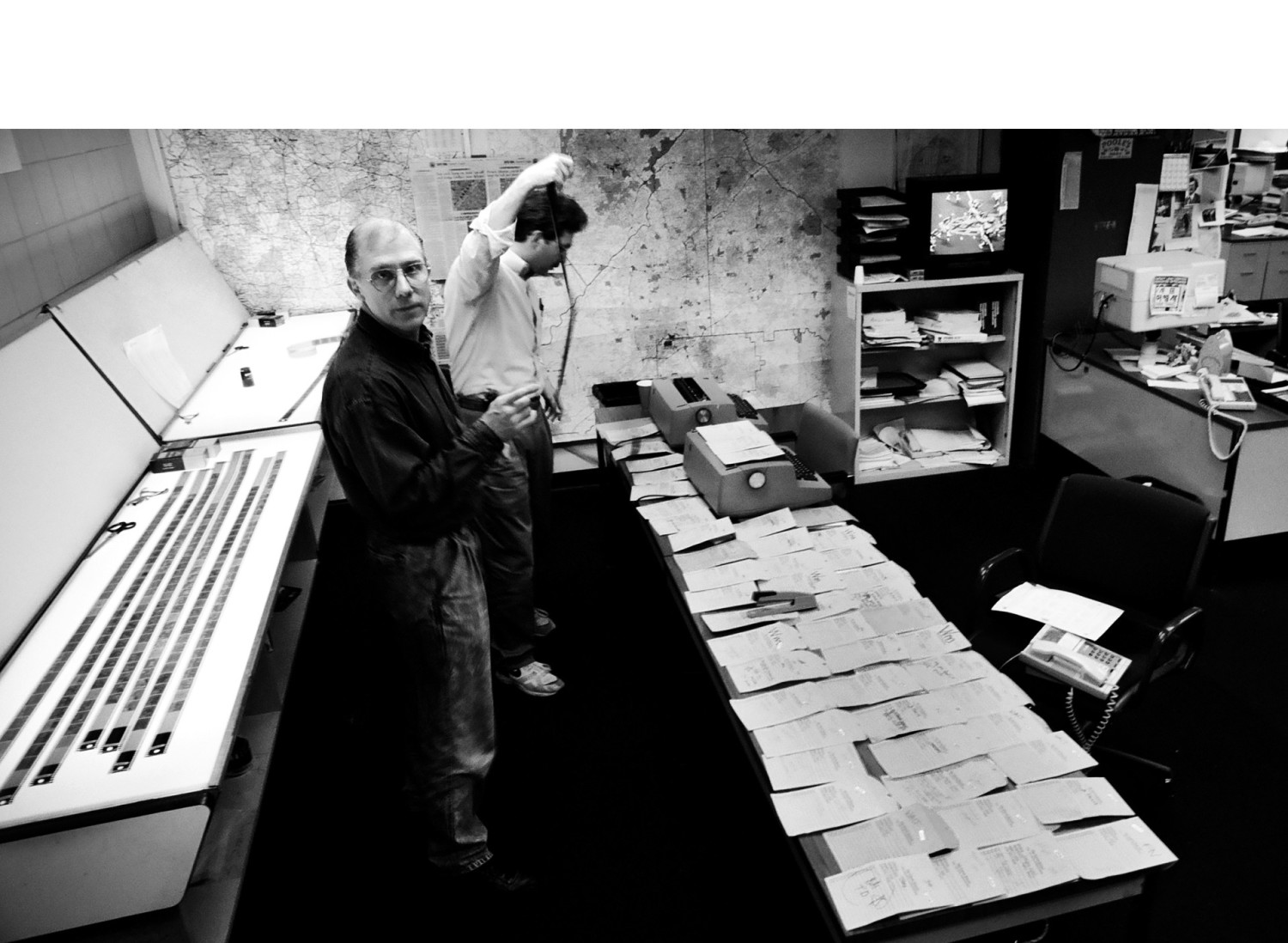I was a “stringer” which meant ‘drop everything now and be on call 24/7 for the next couple of years.’ I’d often get a call from an editor telling me I needed to be on the other side of Atlanta in twenty minutes. When I started answering my home phone with “photo department,” they knew I was serious.
The light table was the heartbeat of the photo department. Watching how the photographers worked with their film and listening to what they were thinking brought my photography to a new level. To this day, I remember listening to John Spink describe his thought process about how he would work a room. And I remember looking at a beautiful, soulful picture taken by Nick Arroyo after he charmed the smiles out of a couple of battle hardened lunch ladies—he turned an average, every day assignment into gold.
The assignment editor, Richard Fowlkes, would say, “It’s a gold mine out there.” I know it sounds corny, but with Richard’s smooth southern accent, and seeing photographers do it every day, it made me a believer.
I think the most important thing I brought away from that experience came from photographer Renee Hannas. The long, narrow darkroom that held a dozen color enlargers was the perfect place to pick the mind of all these great photographers. One time, when the lights had just been turned on, I glanced over at Renee. She looked up from an open bible and said, “Family first.” That was it. That’s all I remember—that and her big smile. It stuck with me, that even in all the excitement of what we were doing, it was family that came first. That thought, without a doubt, influenced me in chasing down a girl. I followed Robin from Atlanta out to New Mexico, and there is where I married the love of my life.
With a solid portfolio and resume from Atlanta I had several career options and we decided on… The Beach! Chill Out in San Luis Obispo, spend a couple of years at The Tribune and move on-that was 1996! It’s the lifestyle we’ve always wanted. Large city newspaper journalism is fun, but it’s more fun to take your little boy kayaking in Morro Bay, only a few blocks from our house. Family First
Back in 2007, I discovered The Wedding Photojournalist Association and realized that I could use a documentary approach to weddings. Shooting people on their most joyous day sounded like a blast. It was a departure from bank robberies and floods and basketball games, and one I was happy to take.
I contacted a longtime friend and wedding photographer extraordinaire—Brittany App—with an email that said something like, “Brittany, I need brides!” (We go way back, even before Bieber!) Brittany brought me on to work with her and I shot the “It wasn’t supposed to rain” gallery, which was the first wedding I’d shot in almost five years. This gallery is a good example of how I approach your day as a photojournalist. Typically, I don’t set up a moment or ask someone to do something. With my journalism background, I was taught strict rules about taking pictures—since we’re gathering news as objectively and ethically as we can, we can’t set up photos or tell people what to do or how to act. So I rely on point-of-view, composition, timing, capturing the moment, and knowing where to be and when…even before it happens.
Both of these images are good examples of two very different techniques. The preacher looking to the heavens happened in the blink of an eye–so fast in fact that I didn’t see it happen. But when the best
Both of these images are good
Both of these images are good examples of two very different techniques. The preacher looking to the heavens happened in the blink of an eye–so fast in fact that I didn’t see it. But when the best man grabbed the umbrella, I hit the motor drive knowing that something cool might happen.
Both of these images are good examples of two very different techniques. The preacher looking to the heavens happened in the blink of an eye–so fast in fact that I didn’t see it happen. But when the best man grabbed the um
thejust happen…
The second image is a completely different approach. Moments before the bride went down the aisle, everyone was nervous–it was raining on her wedding day. But I was excited, of course, because the situation was ripe for a great picture. I put on a 24mm wide angle lens and moved slowly. A close friend whispered something to the bride just as an attendant walked past with the marriage license book. I shot maybe two frames. It was an intimate moment that called for a different approach.
It was just one wedding. One small dot in my career as a photographer. But after looking at the images, I was hooked.
That’s when I decided I could use my photojournalism skills for weddings and start a business with my wife. It was an easy decision, and one I never regret. Renee’s comment about ‘family first’ has come full circle – I‘m available 24/7 for my family and my work is now the cornerstone of other couples’ beginnings–a moment in time hung on the wall to relive their wedding day every day.
I hear voices in my head
I hear voices
So yeah, really, I’m not crazy because of the voices in my head…. It’s the reason why I’m vigilant and alert—I always want to make sure I didn’t leave anything behind as Ed Breen taught me. And I always approach the day with the reassuring words of Richard Fowlkes—spoken in his smooth, southern accent…
It’s a Gold Mine Out There
